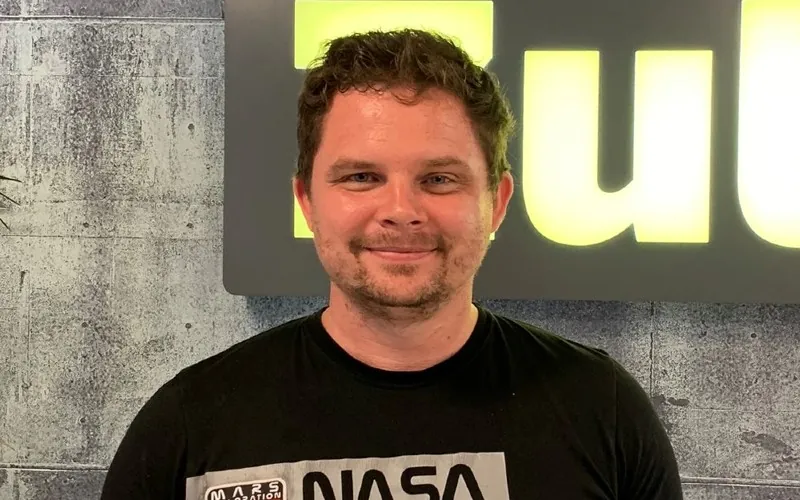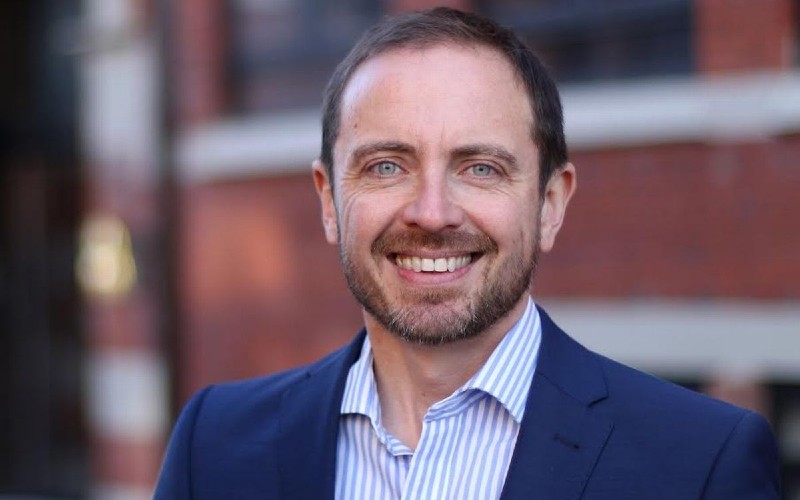When looking at venues for a roundtable of top CTOs, the Slug and Lettuce didn’t make the shortlist.
A boardroom in City Tower with a spectacular view over Manchester seemed more fitting for the brains driving tech companies to new heights.
But no sooner had the introductions been made – with barely a breakfast pastry tasted – a fire alarm drove us down 28 flights of stairs and into the pub.
With a round of coffees ordered, I could finally ask these on-fire tech leaders: how do you approach the challenge of building tech and engineering teams as your company scales?
Scaling tech & teams
A key theme was the need to build a team of high-grade development talent in the UK, contributing to strategic decisions, direction and innovation, with the option of outsourcing when needed.
Andrew Harrington is CIO at Ripe Thinking, one of the leading niche insurance providers in the UK and now majority-owned by private equity firm Aquiline Capital Partners.

“As our company expands, so does our technology,” he says. “We’ve engineered our platform to seamlessly scale alongside the business, making it as effortless as possible to launch new products and features.
“By assessing our infrastructure, embracing cloud solutions, adopting a microservices approach as well as leveraging data analytics we can effectively scale our tech to support our company’s growth and success.
“Ultimately, scalability is not a one-time effort but an ongoing process that needs continual attention and adaptation.”
Richard Somerfield joined Summize, pioneering digital contracting in the legal sector, as CTO in 2020 and spent a dozen years at AppSense.

“You have to align your decisions with the growth of your business,” he advises. “Play to your strengths – once you’ve identified what these are – and always be on the lookout for ways to improve.
“At Summize, we have a core cultural tenet in Kaizen – ‘1% improvements’ – which is company-wide, rewarded and promoted.”
Gary Higham has been CTO at Zuto, a car finance marketplace connecting customers, lenders and dealers, since 2019. He also has experience at online retail giant THG and the BBC.

“Don’t rush to scale your team,” is his advice. “Take time to ensure candidates are a cultural, values and technical fit – prioritising carefully with a smaller team is better than making the wrong hires and losing medium- and long-term momentum.
“Create inclusive hiring strategies that work on a long-, medium- and short-term basis. Build networks with local universities and bootcamps to create long term future growth, utilise returners camps for medium term where known projects are coming up and carefully pick consultants to work with on the short-term.”
Shaun Barrett is a highly experienced figure who is now head of technology at FinTech BankiFi, which creates technology platforms used by legacy banks.
“We have found that a strong core team and the combination of offshore resources works well,” he says. “Creating trusted partnerships with offshore resource providers, we can scale up and down efficiently to suit business needs.”
Sputnik Digital architects and delivers enterprise-level web and mobile projects that are fast, secure and scalable – improving UX, SEO and conversion with high-performance infrastructure. Its clients include Skype, GSK, GoCompare and Swinton Insurance.
MD Andy Nicol says that while the demand for qualified engineers frequently exceeds the available talent pool, compromising on quality to expedite hiring can result in significant long-term challenges for an organisation.

“Although a more deliberate hiring process may temporarily strain resources, this is typically a short-term issue and ultimately contributes to a stronger team foundation,” he expands. “To mitigate resource constraints in the interim, engaging contractors or agency resources can be a viable option, provided the same rigorous evaluation criteria are applied to ensure their expertise and fit within the team.
“Sacrificing quality for speed can lead to costly rework and delays, making it an unsustainable approach to project delivery.
“If you know where to look, there are some great resources in the UK that can provide support by either augmenting a team or delivering a fixed-cost project.”
Marketing
Another theme to emerge was that the best marketing teams in tech businesses have a strong appreciation for product.
By focusing on experience – an area in which engineering teams can provide valuable ideas – as well as message, silos can be broken down and create products which the market wants, says Nicol.
Barrett agrees: “From a marketing perspective, there is great benefit involving engineering in the early stages of product development and building Proof-of-Concepts.
“This communicates concepts and is, for me, a very important part of the pathway to production.”
Harrington says digital platforms rely on IT and marketing working “hand in glove” to deliver the very best user experience.
“This means the customer journey is as optimised as possible, with the average Ripe policy taking just three minutes and 18 seconds to take out on average,” he qualifies. “It’s fantastic when marketeers understand the benefits of IT engineering, and having teams as integrated as possible will lead directly to increased collaboration and a better user interface.
“At Ripe, marketing and IT work so closely together that our front-end developers actually sit within the marketing team.”
Harnessing AI
The companies on our roundtable are using artificial intelligence in a number of ways: to track eyeballs during the customer journey; to transcribe customer calls which can then be fed back into the loop to train chatbots; to capture sentiment analysis.
Ellie Kulsuma, founder at Creating AI, says she has seen a major shift in deploying AI – particularly in the rise of chatbots.

“However, it’s important for companies to ask the question ‘What problem are we solving and what does the outcome look like?’ before adopting any new AI products,” she explains.
“Particularly for engineers, it’s easy to chase the shiny object and forget the problem that needs immediate attention. Creating AI’s goal is to create impactful algorithms and enable companies to make an impact by being more efficient, sustainable and safe.”
Zuto’s Higham says: “Automation is key to how we scale. We value quality conversations with our customers and want to utilise AI and automation to remove toil tasks – the same is true for our back office operations.
“We are currently running trials on ‘AI as a service’ to support business functions and creating our own models for customer-facing applications.
“For example, in the engineering space we have been looking at what areas of the software development lifecycle will benefit from AI and automation, and trying different tools and technologies – from AI code generators to code reviewers to automated incident and anomaly detection in all environments.”
“The cost of LLM usage at scale is really high at the moment, so we are focusing on trials with self-hosted open-source models such as Meta’s Llama 3 for performance.”
Barrett says BankiFi is progressing with PoCs and embedding AI solutions into its products.

“From a user perspective there seems to be unease about letting AI free,” is his view. “I think it is still in the early adopter phase. The transition to the mainstream is the infamous ‘chasm’ which many startups fail to cross.
“Reaching mainstream customers requires startups to shift from focusing on the product to solving people’s needs. It means moving from targeted niche marketing to mass-market outreach.”
Harrington says Ripe has used generative AI to help transcribe and analyse customer calls using AWS services.
“This provides invaluable insights into reasons for customer communications, whether that’s transacting or simply asking a question about their policy,” he says. “With this insight, we can better direct customers to our website or to the members area where they can self-serve.
“We can also understand sentiment across calls to better understand how our customers feel about our services.
“We are also creating more prototypes with AI to help build possible solutions fast and show the worth of the solution before making it ready for full-scale use.”
Small language models could be a future trend to localise feedback loops in areas of business which therefore become more powerful as well as efficient and cheaper, adds Kulsuma.
The roundtable was also attended by David Turner, a fractional CTO, and Jim Larking, CTO at Sputnik Digital.


